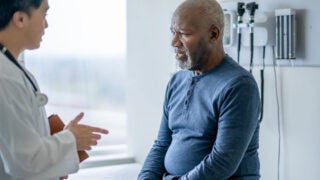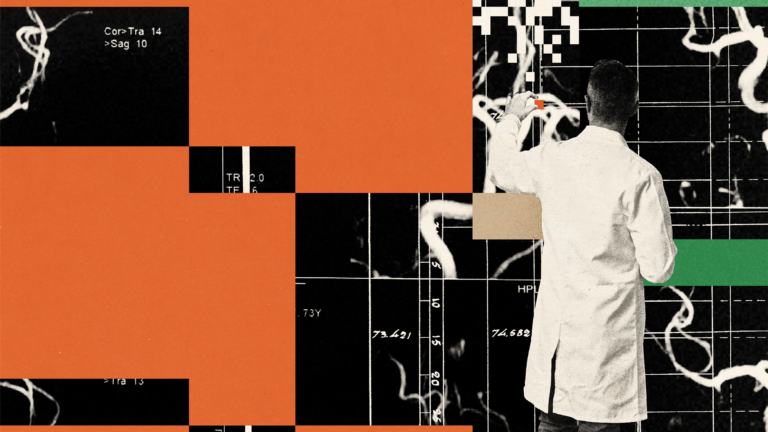
(Illustration/Cristiana Couceiro)
First AId
USC physicians are creating byte-size miracles through AI innovation.
A custom heart or vascular stent for everyone who needs one. Your own stem cells providing the material for 3D-printed organs. Spray-on skin. A powerful diagnostic partner that enables more equitable health care. This is the promise of artificial intelligence (AI), now a full member of any health care team — and USC is leading the way.
AI excels at analyzing large amounts of datasets, and it has applications across every aspect of health care. At USC, researchers and clinicians are using AI to minimize risks and improve patient outcomes, create precision surgical techniques, hasten drug discovery and interpret medical images with impressive accuracy — all treatments thought out of reach just a few years ago.
“In 1980, medical knowledge doubled every seven years,” says Summer Decker, founding director of USC’s Center for Innovation in Medical Visualization. “Today, it more than doubles every 72 days. AI enables us to track patterns we couldn’t see before, because it would be almost impossible to analyze that volume of data. It will help us start seeing those patterns earlier so we can begin addressing problems earlier.”
Already, AI-powered wearables monitor patients’ health metrics 24/7, while 3D printing produces replicas of human organs for study in various applications such as transplantation, disease modeling and drug testing. “This isn’t science fiction,” says Inderbir Gill, executive director of Keck Medicine’s USC Urology, who himself regularly performs AI-assisted robotic surgery. “How can you not be impressed by the potential of AI? It’s coming at us at breakneck speed.” Gill is also Distinguished Professor and chair of the Catherine and Joseph Aresty Department of Urology at the Keck School of Medicine of USC, which hosted the first AI West Med Symposium in February.
AI also helps solve a more mundane — and yet very real — health care challenge: physician burnout from administrative tasks. By using AI to update electronic health records, clinicians can free up time for patient care.
“The opportunity of AI is to take this massive amount of data and improve humanity,” says Steve Shapiro, USC’s senior vice president of health affairs. “By having all this incredible wealth of data and AI algorithms, we’re going to be able to ignite discovery.
“Once we have all this information, we can generate hypotheses, take that to the lab and make real discoveries,” Shapiro adds. “Our scientists, students, clinicians can ask the most important questions and challenge dogma.”
A strong partnership among Keck Medicine of USC, the university’s health schools and the USC Viterbi School of Engineering, alongside national and global colleagues, provides the ingredients for medicine that ultimately may help millions worldwide.
But will AI replace our doctors? Not at all, says Carolyn Meltzer, dean of the Keck School of Medicine. For all of AI’s capabilities, algorithms can’t do everything: Compassion, ethics and creative, nonlinear thinking remain strictly human. “It’s not that AI will replace the physician,” Meltzer says. “It’s that the physician who uses AI will replace the physician who does not use AI.”
Meet some of the physicians at USC who are deploying AI tools to transform healing.
From the Virtual to the Physical
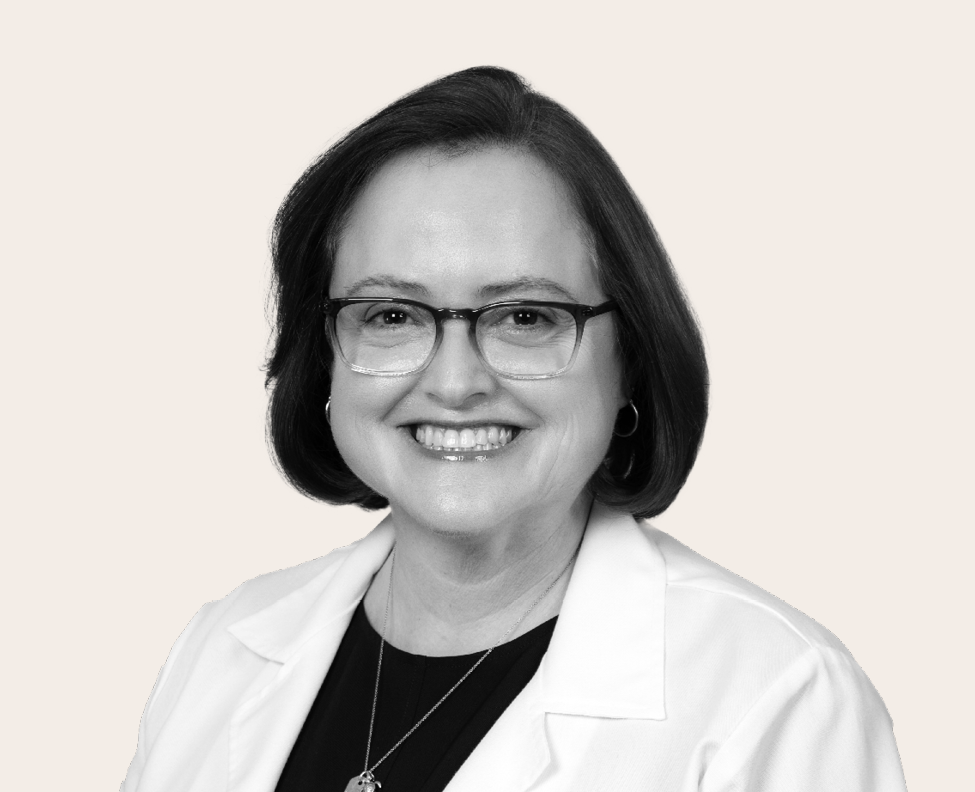
Summer Decker, founding director of USC’s Center for Innovation in Medical Visualization and professor of Clinical Radiology, Surgery and Pathology, creates 3D-printed models of human anatomy — for surgical planning, teaching, medical device development and patient care. Leveraging AI, she says, can improve print quality, detect and correct errors before they happen and make 3D printing more accessible by simplifying the process.
“With 3D printing, we can reduce the time needed for surgery, minimize the risk to patients and know exactly what size surgical device or replacement part to use for each individual. It gives surgeons a road map inside the body with real-time 3D views of a patient’s anatomy. There’s so much we can do with 3D information, whether you’re a surgeon planning an operation or a student learning a procedure. Our patients are the ones who will benefit. When I looked at where I wanted to be to push this technology, the answer was USC because it’s a world leader.
“Our lab holds several patents on a technology that will seed a 3D print with demineralized bone matrix, which can form a custom internal scaffold for facial injuries in kids. Unlike a metal plate, the print and tissue will grow with them. In bioprinting, which is already here, you take a person’s stem cells and reprint their anatomy. Of course, certain organs are easier than others to print. The brain is a long way away — if ever. AI will give us the tools to be better at what we do. We’ve just got to drive it.”
Building Custom Stents
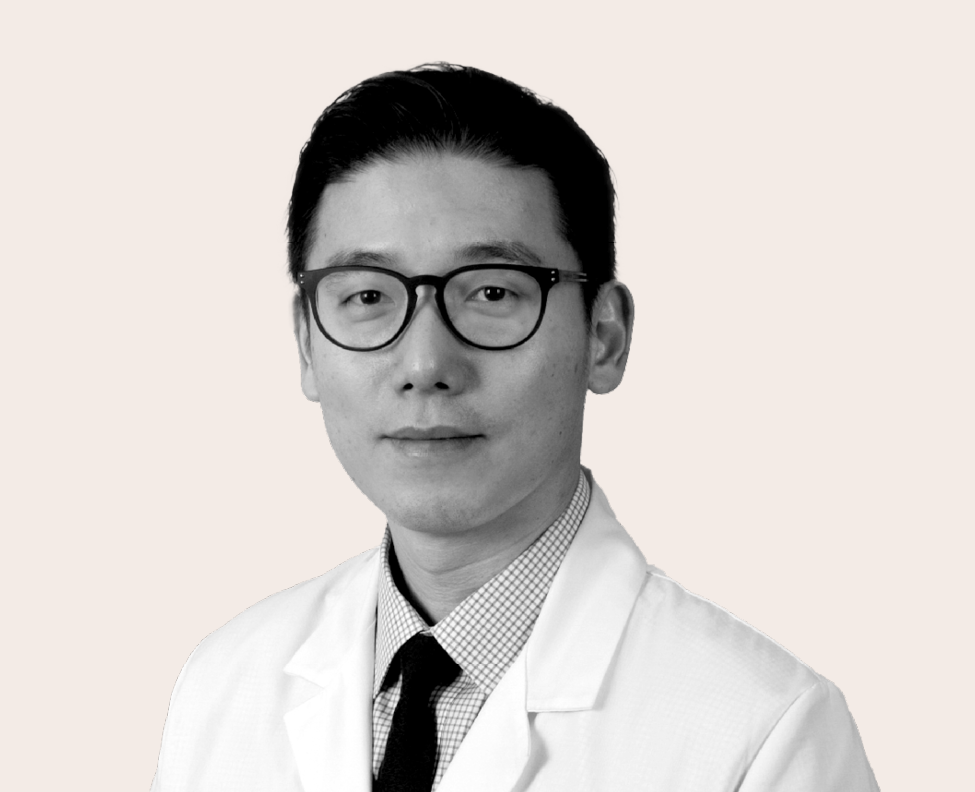
Sukgu Han is a vascular surgeon and biomedical engineer who designs and crafts custom stents for his patients. He is a professor of clinical and neurological surgery and chief of the Division of Vascular Surgery and Endovascular Therapy at Keck Medicine. He also serves as the co-director of the Comprehensive Aortic Center at Keck Hospital and program director of vascular surgery residency and fellowship at Keck School of Medicine.
“Everybody’s anatomy is a little different. An aneurysm — a bulging, weakened area in the aorta — can distort the anatomy as the blood vessel twists on itself. Having the ability to tailor each patient’s stent to fit their anatomy and protect the aorta can make surgery safer. I began making complex, custom aortic stent grafts for my patients 10 years ago. I’ve now done more than 500 — a lot of it I’ve done manually. The next phase will be automated AI analysis, which will speed the process of sizing the stents in three dimensions to fit each patient.
“We recently launched a project using an AI vessel-segmentation algorithm that will compare a patient’s CT scan with their previous scan to determine what is happening in their aorta in much greater detail than how we’re doing this currently — which is basically a radiologist or surgeon putting the images side by side and hoping to detect any changes that make a difference in the patient’s care, but can easily be missed due to human error.
“We haven’t even scratched the surface in tailoring each patient’s treatment to a deeper granularity. No one has the technology to 3D print some of these custom stents — yet. That may be coming our way sooner than expected. Next is printing cardiac structures like heart valves for implantation. Who knows what we’ll be talking about in five years?”
Preventing Avoidable Injuries
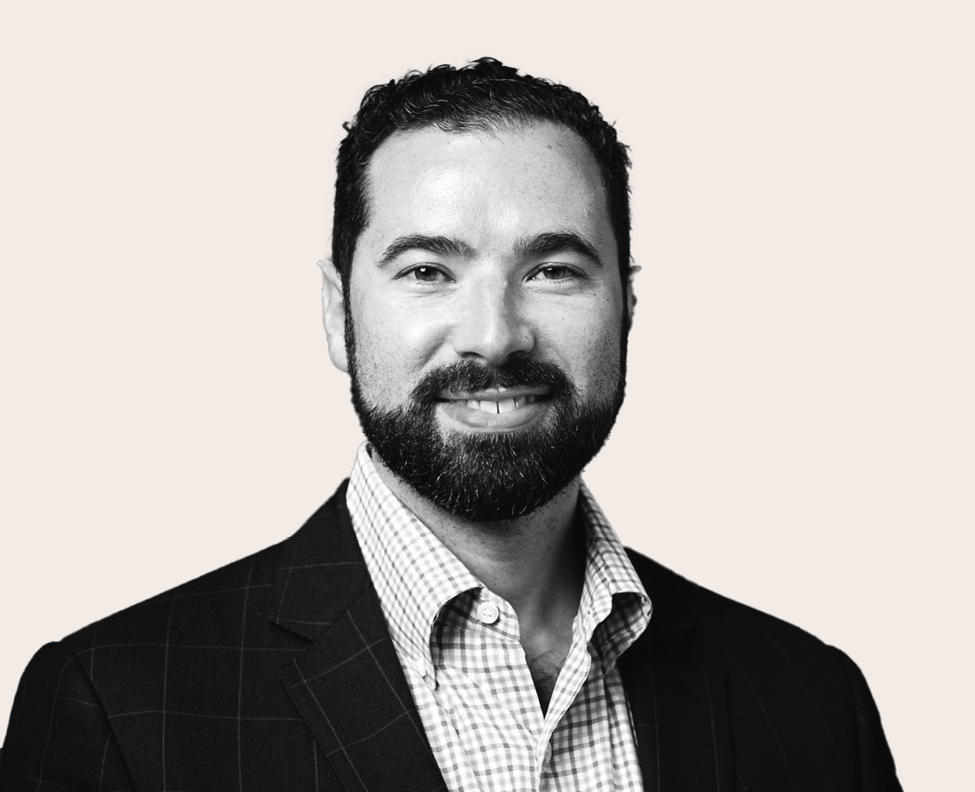
William Padula is an advocate for using AI to better predict pressure injuries, commonly known as bedsores. He is assistant professor of pharmaceutical and health economics at the USC Alfred E. Mann School of Pharmacy and Pharmaceutical Sciences.
“More people die from pressure injuries acquired in the hospital than from car accidents. The annual cost of hospital-acquired pressure injuries in the United States is $30 billion and 60,000 deaths. By my calculation, we could probably prevent most injuries in a smart hospital infrastructure using data science for $10 billion to $15 billion and eliminate $30 billion in waste and save many lives. This would give us a lot of financial bandwidth to do other things, such as gene therapy for sickle cell disease or for kids with cystic fibrosis.
“In the 1980s, nurses began using a paper-based tool to document pressure injury risk factors on a scoring sheet — an antiquated method by today’s capabilities. USC is collaborating with Johns Hopkins University and UH Cleveland Medical Center; we developed a risk-assessment model using machine learning, which increased the accuracy of risk prediction to 74% — a more than 20% jump over human methods.
“An unbiased machine-learning tool based on data consistent across all patients — whether sensory data or blood tests — will enable us to better predict the risk each patient faces of developing a pressure injury or other adverse health outcomes. Through AI, we can make health care more equitable and more focused on prevention and treatment. That’s the potential of AI.”
Offering ‘An Extra Set of Eyes’
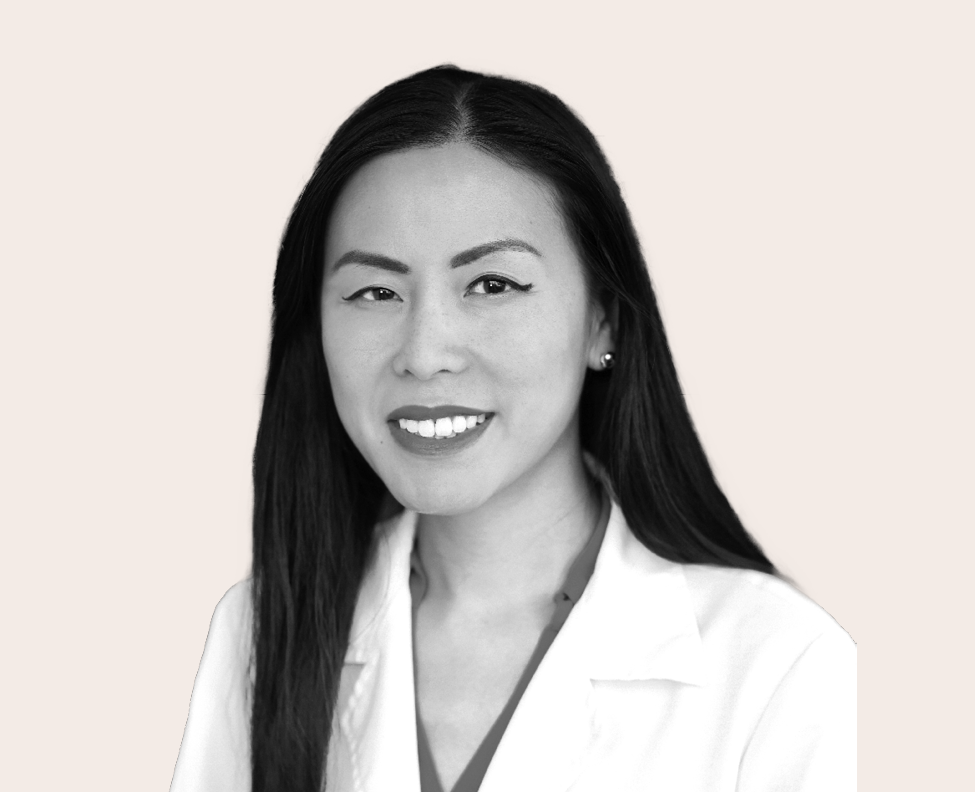
Melinda Chang, assistant professor of clinical ophthalmology at USC Roski Eye Institute, part of Keck Medicine of USC, wants to improve diagnosis of swollen optic nerves in kids, a potentially serious neurologic problem. She believes AI can reduce the need for diagnostic procedures that require sedation of children.
“Swollen optic nerves, known as papilledema, can be a sign of a brain tumor, hydrocephalus or meningitis. It’s one of the most common reasons kids are referred to our pediatric neuro-ophthalmology clinic. Complicating the diagnosis is pseudopapilledema, in which the optic nerves also appear swollen but are essentially benign.
“No single imaging technique can accurately differentiate between the two conditions on its own. Even combining them all might not be accurate enough. A full workup requires an invasive lumbar puncture and sedation in kids, which we want to avoid. We recently initiated a multicenter study comparing human diagnoses and an AI model programmed to scrutinize minute details in photos of the back of the eye.
“The human experts did very well in distinguishing severe papilledema from pseudopapilledema, but AI did much better. In cases of mild papilledema, which is harder to differentiate, AI achieved an accuracy of approximately 70% and sensitivity close to 90%, far surpassing the performance of human experts, whose accuracy ranged from 53% to 59% and sensitivity from 39% to 53%. For us, that means AI has promise in these difficult cases in potentially reducing the rate of kids undergoing unnecessary tests and missed neurological problems. AI won’t replace doctors but will serve as an extra set of eyes.”
Cancer Care at Home
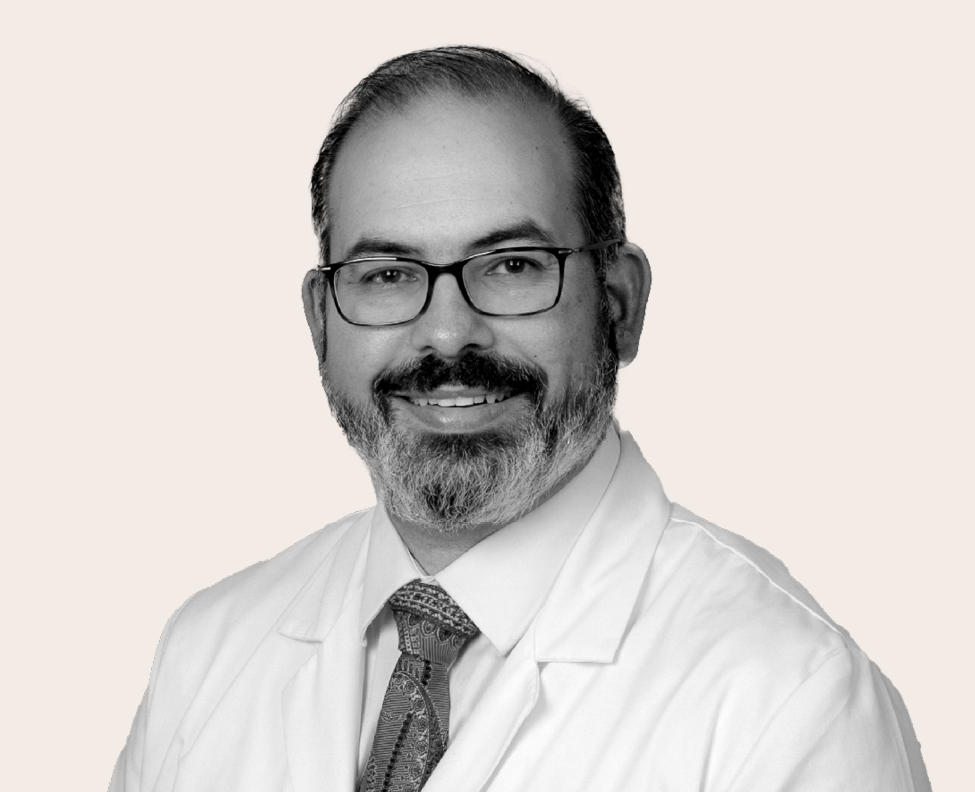
Jorge Nieva is exploring at-home care for patients with non-small cell lung cancer, which is made possible by telemedicine and remote monitoring. A Keck Medicine of USC medical oncologist and lung cancer expert, he is associate professor of clinical medicine, Keck School of Medicine of USC.
“These days, 30% to 40% of my lung cancer patients can be treated with a pill. Some cancers, like non-small cell lung cancer, still require injections. Our new clinical trial deploys nurses to patients’ homes to administer immunotherapy medication under the skin. During the pandemic, the use of telemedicine exploded, and patients appreciated the convenience, especially in Los Angeles, which can be hard and stressful to navigate. The trial also relies on telemedicine visits and remote monitoring. It’s like a modern house call. My excitement about digital tools like these is having access to real-time and self-reported data on the patient’s vital signs, movement data and symptom management. It leads to better decision-making.
“Some applications of AI in health care will be very important, such as assistance with the analysis of medical images and pathology slides, and chatbots for triaging patient communications. When seeking to improve the health of a population through better care coordination and patient engagement, AI can help ensure patients get timely cancer screenings and follow-up. But we’re not at the day yet when someone will type their symptoms into a box, receive a diagnosis and a prescription in the mail.
“With something as critical as a diagnosis, you’re always going to want a human who has thought about the problem enough that they’re willing to say, ‘No, I’m responsible. The buck stops with me.’”
From Skin-Like Wearables to Gut Clues
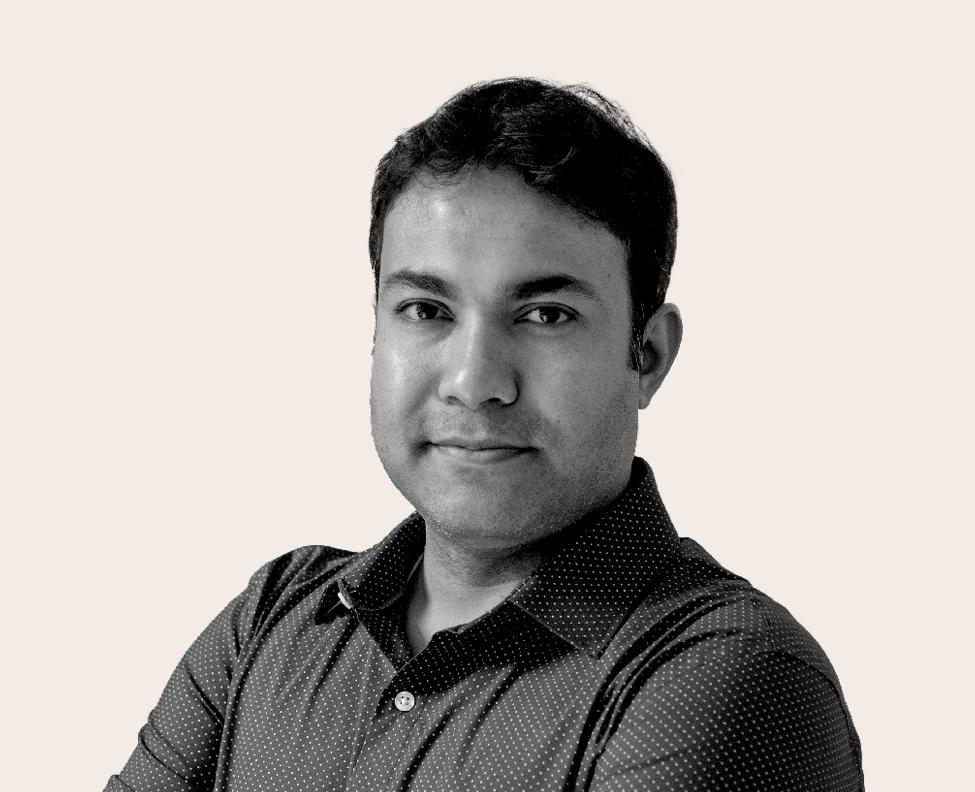
Yasser Khan invents AI-powered wearable, implantable and ingestible medical devices. He is an assistant professor of electrical and computer engineering at the USC Viterbi School of Engineering and the USC Institute for Technology and Medical Systems Innovation, a joint Keck School of Medicine of USC-USC Viterbi initiative.
“Imagine using AI-enabled devices to track your physical and mental health. By printing electronics on plastic and rubber, wearables become so thin, flexible and stretchable, they behave like a second skin. One study I was involved in developed a ‘bandage’ that can measure tumor growth within the width of one human hair. Now we’re designing a wearable sensor in patch form with physiological and bio-chemical sensing capability to help classify mental states. And the skin-like electronics revolution is just starting.
“In addition, my lab is focused on implantables and ingestibles — the latter is brand-new work out of USC. We are now designing a combination wearable/ingestible system that could someday serve as a ‘Fitbit for the gut’ for early disease detection. It combines a smart pill that can measure gases, chemical markers and neurotransmitters, plus a wearable system (essentially a coil over your shirt) with high resolution to follow the capsule. There’s no way now to measure these things noninvasively. The hope is this capsule someday can carry a chemotherapy drug and be released in the exact location to target the cancer.”
Hope for Diabetics
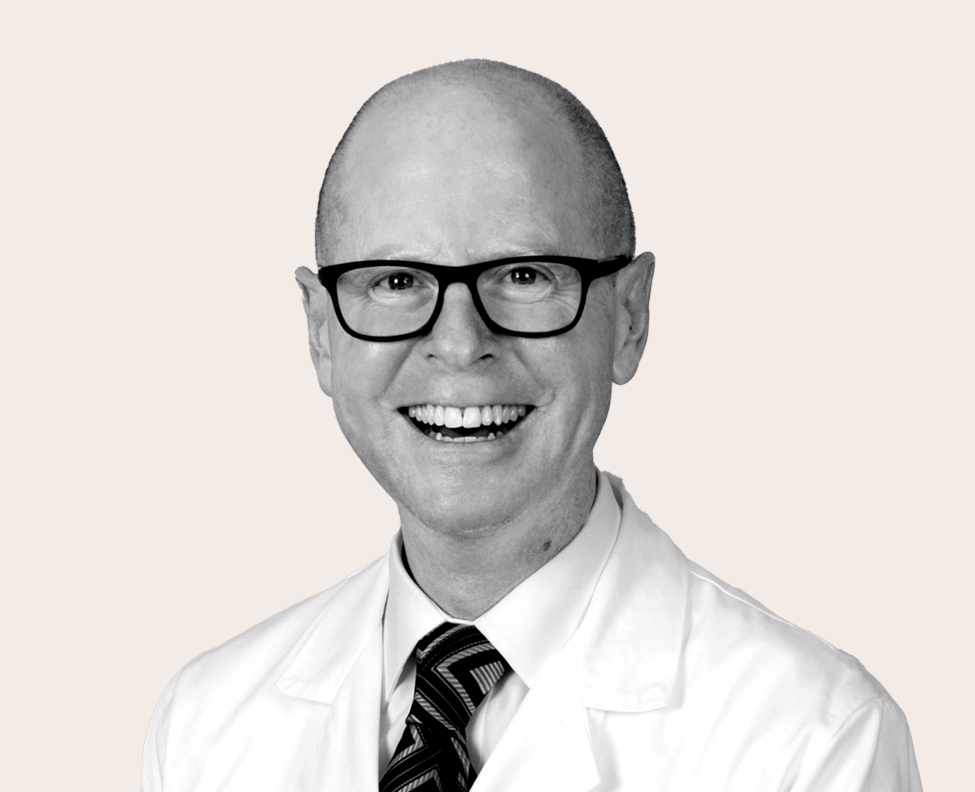
David G. Armstrong is a professor of surgery and neurological surgery at the Keck School of Medicine of USC, a podiatric surgeon and limb preservation specialist with Keck Medicine of USC. A diabetic wound care expert, he works within a coordinated program to treat diabetic foot ulcers and other chronic wounds. Their work is merged with technologies such as injectable sensors, gene-therapy- directed wound healing and Bluetooth-enabled artificial blood vessels.
“Every second someone develops a diabetic foot ulcer. Half of these people get a foot infection, and 20% end up in the hospital. Every 20 seconds there’s an amputation. We believe virtually all of this is preventable. That’s why we developed the predictive Smart Boot, a wearable technology supported by AI-based algorithms that can help diabetic patients recover from dangerous foot wounds. It can identify not only whether people are wearing it but how fast they move, the steps they take, if they’re unsteady or about to fall.
“Right now, there’s a fundamental blurring of the lines between consumer electronics and medical devices. With our Caltech colleagues, we’re bringing smart bandages that sense and respond to inflammation or infection to clinical use. Having worked with augmented/virtual reality for two decades, I’m also excited about the Apple Vision Pro opening up possibilities for surgical procedures, medical training and care.
“These devices capture the imagination — and they’re getting better at helping us look after our patients better and drive medicine forward. By marrying our humanity with the technology, we can effect positive change on ourselves and the planet. We don’t have to predict the future. It’s all happening now.”


